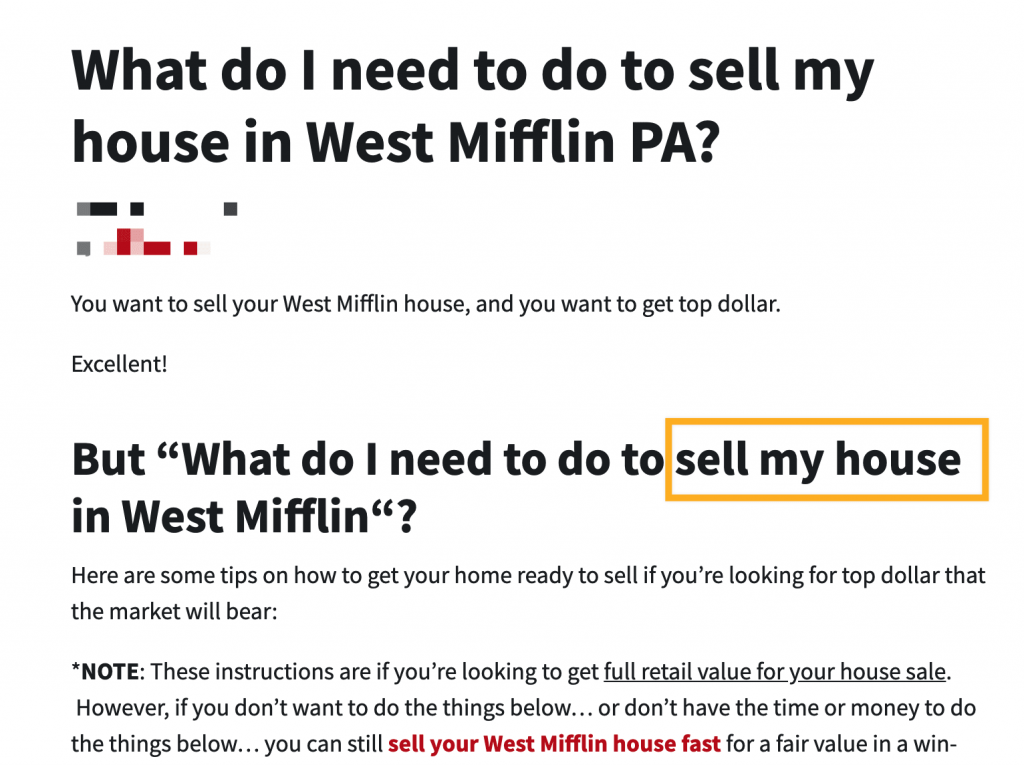Real Estate SEO: Top Strategies, Tips & Examples
These are short, actionable tips for improving your real estate website’s SEO.
What is SEO for Real Estate Investors?
SEO for real estate investors is the process of increasing your website rankings by improving on-page and off-page factors such as keyword content, page speed, descriptive URLs, and backlinks.

Real Estate SEO Bible: The Ultimate SEO Keywords Guide
Download NowChoosing a domain name
Your domain name serves as your website’s digital address and a crucial first impression. While it can influence SEO to some extent, it’s not the sole factor. Here’s a breakdown of key considerations for choosing a domain name:

- Brand Identity: Prioritize a domain name that reflects your brand identity and resonates with your target audience. It should be memorable, easy to spell and pronounce, and ideally tell users something about your business or niche.
- SEO Benefits: While exact-match keyword domains aren’t essential for high ranking anymore, consider incorporating relevant keywords strategically within your domain name. However, prioritize readability over keyword stuffing.
- User Experience: Keep your domain name concise, ideally under 15 characters. Opt for clarity and avoid hyphens or underscores, which can be difficult to remember and type.
- Local vs. Global Reach: Consider your target market. If you plan to operate solely within a specific location, using a location keyword in your domain name can be beneficial. However, a more generic domain name might be preferable if you have broader ambitions.
- Availability and Extensions: Check for domain name availability across popular extensions like .com, .org, and potentially relevant industry-specific extensions (e.g., .realestate for real estate businesses).
Moving Beyond the “Yes or No” on Domain Names and SEO:
When ranking websites, search engines consider various factors beyond exact-match keywords in domain names. High-quality content, strong backlink profile, and user experience all play a significant role.
Here are some additional SEO best practices to consider alongside your domain name selection:
- Content Strategy: Focus on creating valuable, informative content that naturally addresses user search intent and incorporates relevant keywords.
- Technical SEO: Ensure your website has a clean and mobile-friendly structure focusing on fast loading times.
- Backlinks: Build high-quality backlinks from reputable websites to your domain, which is a strong SEO signal.
Remember: The best domain name effectively balances brand identity, user experience, and SEO considerations. By following these guidelines, you can choose a domain name that serves you well in the long run.
As for having a keyword-rich domain name, check out our thoughts here.
Uncover the Keywords that Drive Results
Keywords remain a fundamental element of SEO, but the landscape has evolved. Here’s how to conduct effective keyword research:
- Use Carrot’s Integrated Keyword Tool: Use keyword explorer by entering a common keyword like “sell my house fast” and see all the possibilities for your marketing unfold. Our tool will grab related keywords and show you their traffic estimates and the estimated difficulty of ranking for the keyword. This saves you time and money because it eliminates the need for multiple third-party tools.
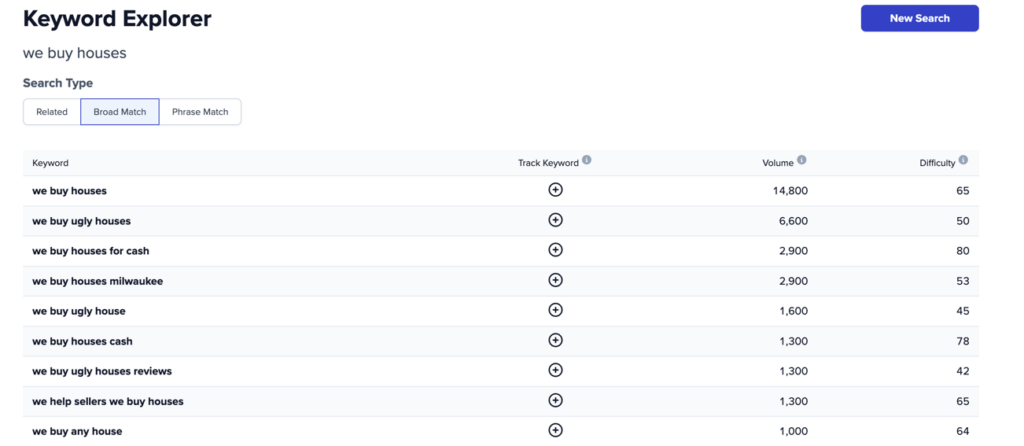
- Focus on Search Intent: Don’t just target keywords with high search volume. Prioritize keywords that accurately reflect the intent of your target audience. What are they searching for? What questions do they have?
- Embrace Long-Tail Keywords: While high-volume keywords can be competitive, long-tail keywords with lower search volume but higher intent can be easier to rank for and drive targeted traffic.
- Incorporate Local SEO: If you have a local business, target keywords that include your location to attract nearby customers. Carrot’s Auto Location Pages makes this simple, fast and easy to maintain. You simply tell us the state, county and city pages you want to set up and we create them automagically. Each location page is connected to your home page so every time you make changes to it your location pages will reflect the same.
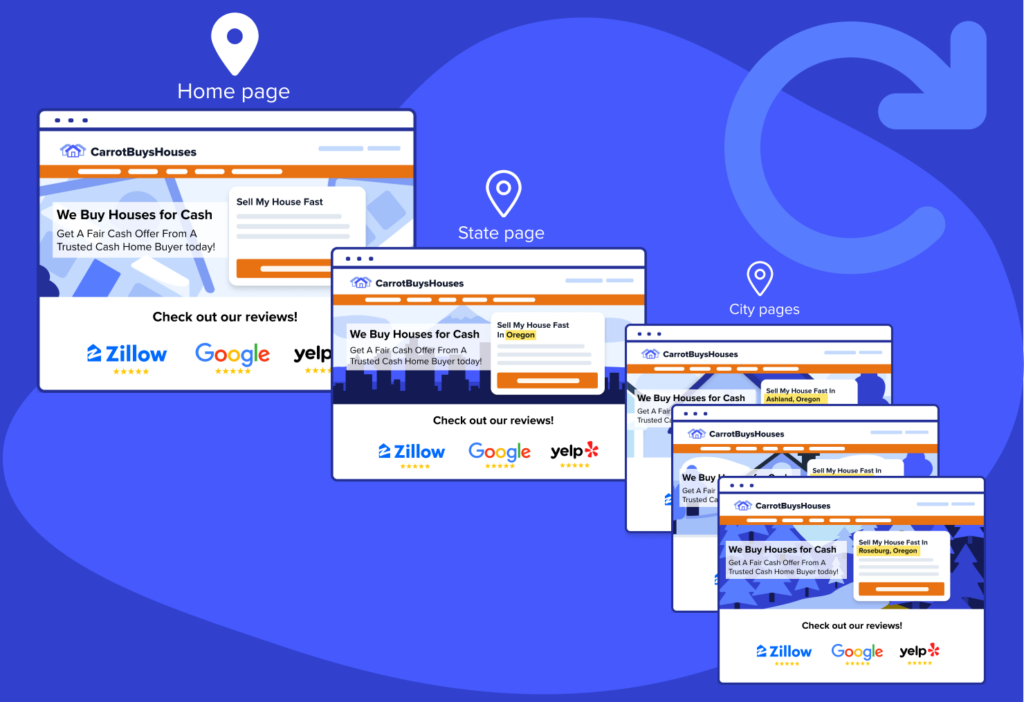
- Stay Informed: Search trends are constantly evolving. Regularly revisit your keyword research to identify new opportunities and adapt your strategy accordingly.
- Move Beyond Basic Tools: While Google Keyword Planner can be a starting point, consider exploring more advanced keyword research tools like Ahrefs, Moz Pro, or Carrot’s Keyword Explorer tool.
Carrot’s Keyword Explorer tool is specifically designed for real estate investors, providing deeper insights into search volume, competition levels, and long-tail keyword variations tailored to your niche. With Carrot’s Keyword Explorer tool, you can quickly identify high-converting keywords to attract motivated sellers and buyers, making it easier to optimize your website for better search rankings and lead generation.
If you want to know which keywords we have identified as the best to target on your website, grab our SEO Bible.
By implementing these updated strategies, you can move beyond basic keyword selection and discover the keywords that will drive your website’s organic traffic and success.
Craft Content that Captures Attention (and Google’s Eye)
User engagement remains a crucial factor in Google’s ranking algorithms. Here’s how to create content that keeps readers hooked:
- Address User Intent: Go beyond simply including keywords. Identify your target audience’s questions and needs and craft content providing valuable answers and solutions.
- Structure for Readability: Break up large blocks of text with subheadings, bullet points, and clear formatting. Use shorter paragraphs for easier skimming.
- Integrate Multimedia: Strategically incorporate videos, infographics, images, and even podcasts alongside written content to cater to different learning styles and preferences.
- Optimize for Mobile: Ensure your website and content render flawlessly on mobile devices, as many users access information this way.
- Leverage Internal Linking: Link to relevant content within your website to keep users engaged and exploring.
- Embrace Interactive Elements: Consider incorporating quizzes, polls, or interactive calculators to boost user engagement.
- Prioritize Quality Over Quantity: Focus on creating in-depth, informative content that provides real value to your audience.
By implementing these tactics, you’ll create content that not only captivates readers but also sends positive signals to search engines about your website’s relevance and authority.
Craft Compelling Title Tags for Maximum Impact
While the exact character limit can fluctuate slightly, Google generally displays around 60 characters of your title tag in search results. Here’s how to optimize your title tags for the current landscape:
- Prioritize Conciseness and Clarity: Strive to keep your title tags under 60 characters while still conveying the essence of your content.
- Focus on User Intent: Craft titles that accurately reflect your content’s value and entice users to click.
- Include Relevant Keywords: Incorporate target keywords naturally within the title tag, but avoid keyword stuffing.
- Consider Branding: Where appropriate, integrate your brand name to establish recognition.
- Test and Refine: A/B testing different title tag variations can help you identify what resonates best with your audience.
We have a handy tool built into Carrot websites that helps you create your page or blog post’s title tag.

By following these guidelines, you can create compelling title tags that improve click-through rates and provide search engines with valuable context about your content.
Real Estate Conversion Copywriting: How To Sell The “Click” With Your Meta Description And SEO Title
Focus on User Intent, Not Keyword Placement
While including relevant keywords throughout your content remains important, the emphasis has shifted from strict keyword placement to user intent. Here’s what you should prioritize:
- Address User Needs: The first 100 words of your content should immediately grab the reader’s attention and address their specific needs or questions.
- Demonstrate Value Proposition: Communicate what your content offers and how it will benefit the reader.
- Integrate Keywords Naturally: Incorporate relevant keywords within the first 100 words, but prioritize readability and avoid keyword stuffing.

By focusing on user intent and value proposition at the beginning of your content, you’ll engage readers, keep them coming back for more, and establish yourself as a credible source. Search engines will also recognize the relevance of your content to user queries.
Craft Clear and Descriptive URLs
While URL length isn’t a direct ranking factor, clear and concise URLs can enhance user experience and potentially improve SEO:
- Prioritize Clarity: Strive for URLs that accurately reflect the page’s content and are easy for users to understand.
- Balance Keywords and Readability: Incorporate relevant keywords naturally within the URL, but avoid keyword stuffing that can appear clunky.
- Keep it Concise: Aim for shorter URLs, but prioritize clarity over extreme brevity.
- Use Hyphens for Separation: Separate words within your URL using hyphens (-) to improve readability.
Remember, search engines also consider user behavior when ranking websites. Clear URLs can lead to higher click-through rates, which can indirectly signal value and relevance to search engines.
Leverage the Power of Images for SEO and Engagement
Images are no longer just visual breaks; they’re strategic SEO tools. Here’s how to optimize your website’s imagery:
- Enhance User Experience: Integrate high-quality, relevant images throughout your content to improve visual appeal, break up text, and guide readers through your content.
- Optimize Image File Size: Large image files can slow your website’s loading speed. Use tools to compress images without sacrificing quality.
- Prioritize Image Relevance: Don’t just stuff images for the sake of it. Ensure they directly relate to your content and enhance user understanding.
- Craft Compelling Captions: Include descriptive captions with relevant keywords to improve accessibility and provide context for search engines.
- Alt Text Matters: Always include alt text for your images. This provides an alternative description for users with visual impairments and is crucial for search engine image indexing.
By implementing these strategies, you’ll leverage the power of images to keep users engaged and send valuable signals to search engines about your content’s relevance and value.
Build Trust and Transparency with Privacy Policy and Terms Page
While directly impacting SEO rankings might be minimal, having a Privacy Policy and Terms of Use page is crucial for several reasons:
- Compliance and User Trust: These pages are essential for legal compliance and building visitor trust. They demonstrate transparency about handling user data and the terms governing website use.
- Enhanced Brand Reputation: A professional website with clear legal disclaimers fosters a sense of legitimacy and user confidence.
- Potential Indirect SEO Benefits: While not a direct ranking factor, user trust can influence behavior. Clear legal disclosures can lead to lower bounce rates and longer dwell times, which can be positive signals for search engines.
Focus on User Experience:
- Clear and Concise Language: For the average user, draft your legal pages in clear, easy-to-understand language.
- Accessibility Best Practices: Ensure your legal pages are accessible to users with disabilities, following WCAG guidelines.
Having a Privacy Policy and Terms of Use page goes beyond SEO. It’s about building trust, complying with regulations, and providing a positive user experience. These tips ensure your website adheres to best practices and fosters a trustworthy online presence.
Carrot websites include these pages in the footer by default.

Anchor Text Optimization: Focus on Relevance, Not Repetition
While including relevant keywords in your anchor text can be beneficial, Google now prioritizes natural language and user intent over keyword density. Here’s what you should focus on:
- Clarity and Context: Your anchor text should clearly describe the linked page’s content and entice users to click.
- Natural Language: Use phrases and sentences instead of forcefully inserting keywords.
- Variety: Incorporate a mix of branded anchor text (your website name), generic terms (like “click here”), and relevant keywords throughout your website.
- Avoid Keyword Stuffing: Overstuffing keywords in anchor text can appear unnatural and potentially harm your SEO.

Remember, the goal is to create a user-friendly experience while providing relevant signals to search engines.
Building Backlinks: Strategies for Long-Term SEO Success
Links are like votes of credibility in the digital world. Earning high-quality backlinks from reputable websites remains a cornerstone of SEO success. Here are some effective link-building strategies:
- Craft High-Value Content: The foundation of any link-building strategy is creating exceptional content that people naturally want to reference and link to. Focus on in-depth, informative pieces that address your target audience’s needs and provide unique value.
- Guest Blogging on Relevant Sites: Identify high-authority websites within your niche and contact their editors with guest blogging pitches. Offer to contribute valuable content that complements their existing audience.
- Broken Link Building: Find broken links on relevant websites within your niche and create content that can be a better, more up-to-date replacement. Contact the website owner and suggest your content as a replacement link.
- HARO (Help A Reporter Out): HARO connects journalists with sources for their stories. Sign up as a source in your area of expertise and respond to relevant queries. If your expertise is featured in an article, you’ll often earn a valuable backlink.
- Testimonials and Reviews: Build relationships with businesses you use and admire. Offer to provide testimonials or reviews in exchange for a link to your website.
- Unnatural Link-Building Practices? Avoid Them: Be wary of tactics like link buying or link exchanges, as search engines penalize websites that engage in manipulative link-building schemes.
We have a built in backlinks tool that will give you detailed information about all of your backlinks including the source of the backlink, the authority score, what type of backlink, pertinent dates and more,

Remember: Link building is a long-term strategy. Focus on creating high-quality content, building genuine relationships within your niche, and earning backlinks organically.
While “Searches Related To” on Google can be a starting point, it’s not the most robust approach to keyword research. Here are some effective strategies to uncover valuable keywords:
Go Beyond “Searches Related To”: Advanced Keyword Research Strategies
Carrot’s Keyword Explorer is an awesome keyword research tool. It has many features to help you with your website’s SEO.
But what it’s best at is helping you find the keywords your competition is currently ranking for.
So, put in a keyword or their domain and see what comes up. You can find the keywords in their title tag and meta description and try to optimize them for yourself.
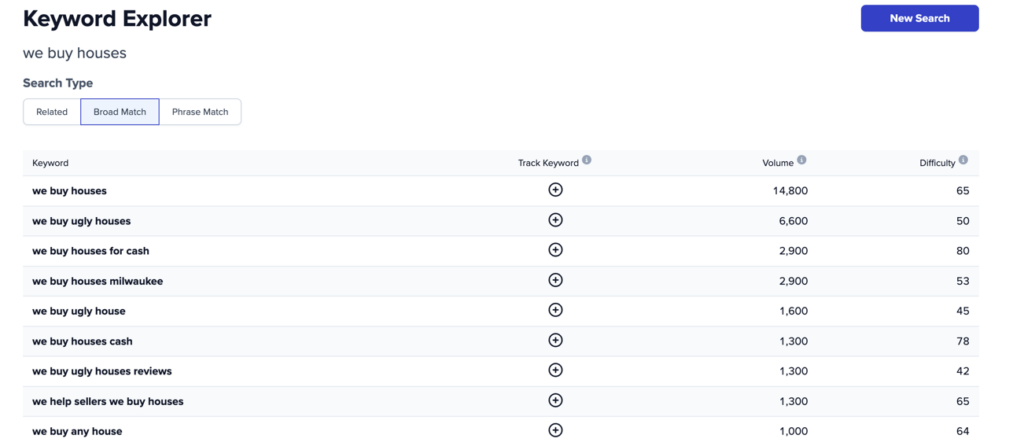
Steal Your Competitors’ Keywords With Carrot’s Keyword Explorer
- Leverage Keyword Research Tools: Utilize advanced keyword research tools like SEMrush, Ahrefs, or Moz Pro. These tools offer deeper insights into search volume, competition level, and long-tail keyword variations.
- Focus on Search Intent: Don’t just target keywords with high search volume. Prioritize keywords that accurately reflect the intent of your target audience. What are they searching for? What questions do they have?
- Explore Long-Tail Keywords: Consider incorporating long-tail keywords with lower search volume but higher intent. These can be easier to rank for and drive targeted traffic.
- Competitor Analysis: Use SEO tools to analyze your competitor’s content and keyword strategy. Identify ranking keywords and explore opportunities to create content that surpass theirs.
- Stay Informed: Search trends are constantly evolving. Regularly revisit your keyword research to identify new opportunities and adapt your strategy accordingly.
By implementing these strategies, you’ll move beyond basic keyword research and discover the keywords that will truly resonate with your audience and drive organic traffic to your website.
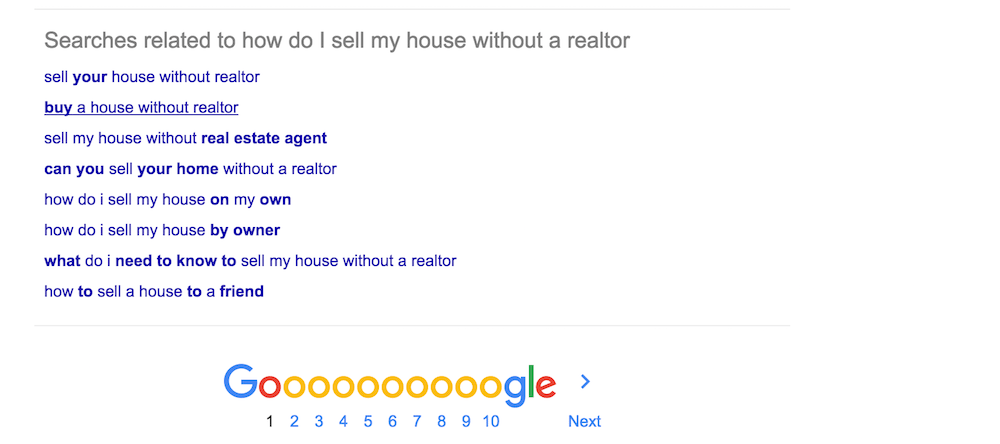
Mobile-First Indexing: Prioritize a Flawless Mobile Experience
Google prioritizes mobile-friendliness for website indexing and ranking. This means the mobile version of your website should be the primary focus for SEO purposes. Here’s what you should ensure:
- Responsive Design: Implement a responsive website design that adapts seamlessly to different screen sizes, offering an optimal viewing experience on all devices (desktop, mobile, tablet).
- Fast Mobile Load Speed: Mobile users are impatient. Optimize your website for quick loading times on mobile devices. This includes optimizing image sizes, minimizing HTTP requests, and utilizing mobile caching.
- Easy Navigation: Ensure your website’s navigation is clear, intuitive, and finger-friendly on mobile screens.
- Legible Text and Buttons: Use large fonts that are readable on small screens. Make buttons easy to tap and avoid cluttering your mobile interface.
- Test Thoroughly: Rigorously test your website across various mobile devices and browsers to identify and address any functionality or display issues.
Carrot members see 50-75% of traffic from mobile devices.
You should make sure your website is mobile-friendly. Not sure how to do that?
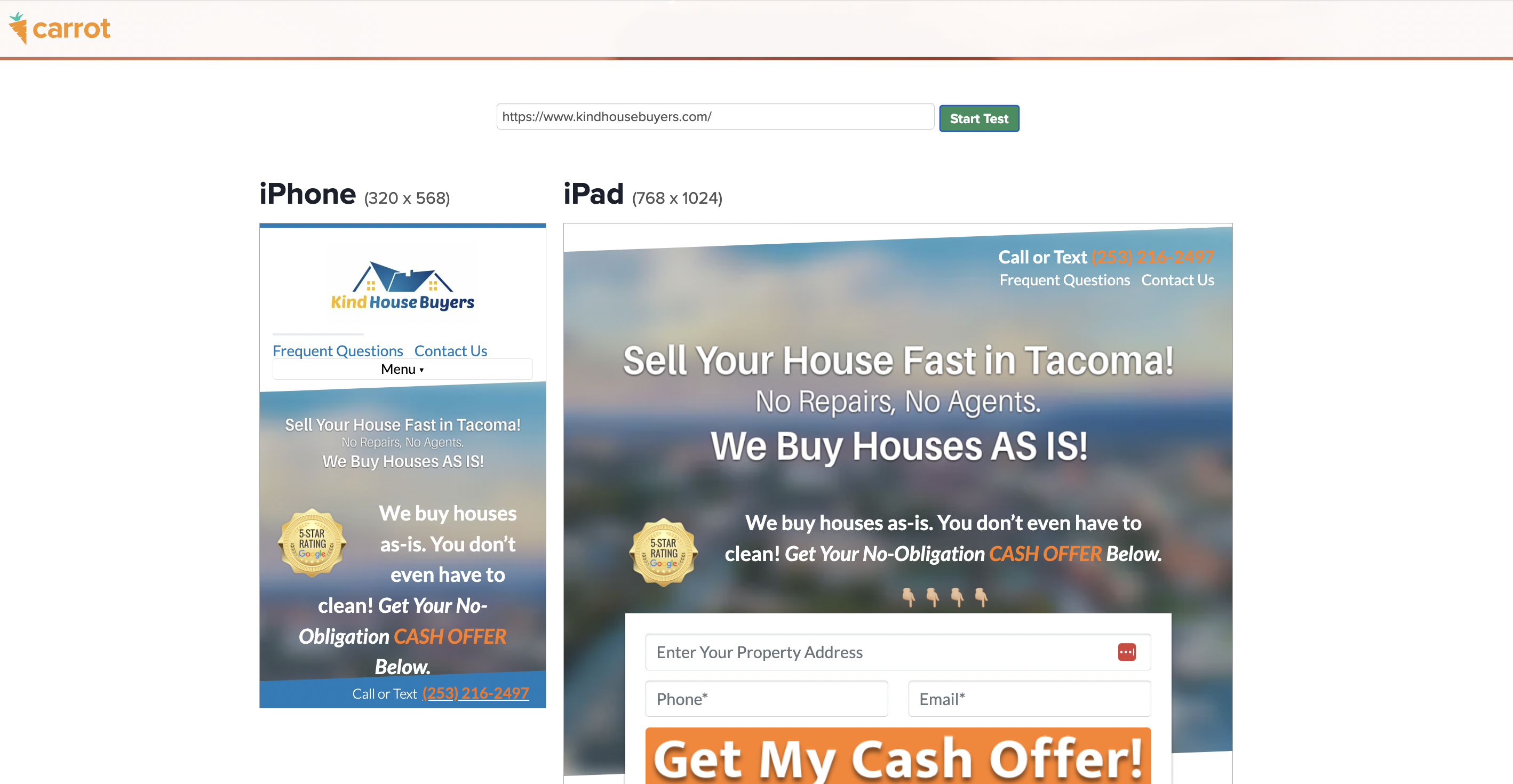
Prioritize Blazing-Fast Website Speed for SEO and User Experience
Website speed is no longer an afterthought; it’s a crucial SEO factor and user experience metric. Here’s why website speed matters and what you can do to optimize it:
- Core Web Vitals: Google’s Core Web Vitals are a set of metrics that assess loading speed, responsiveness, and visual stability. These metrics significantly influence SEO performance.
- User Engagement and Bounce Rates: Slow loading times frustrate users who bounce off your website. Faster loading speeds improve user engagement and reduce bounce rates, sending positive signals to search engines.
- Conversion Rates: Speed directly impacts conversions. A study by Google found that a 1-second delay in mobile loading time can lead to a 70% conversion rate drop.
Strategies for Speed Optimization:
- Invest in Quality Hosting: Reliable hosting with robust infrastructure is essential for fast loading speeds. Consider managed hosting providers that offer speed optimization features.
- Optimize Images: Large image files can significantly slow down your website. Use tools to compress images without sacrificing quality.
- Leverage Browser Caching: Enable browser caching to store website elements on users’ devices, reducing the need to download them on every visit.
- Minify Code: Minify your website’s code (HTML, CSS, JavaScript) by removing unnecessary characters and formatting. This reduces file size and improves loading speed.
- Reduce HTTP Requests: The fewer HTTP requests your website receives, the faster it will load. Consider combining files or using a Content Delivery Network (CDN) to reduce requests.
By prioritizing website speed optimization, you’ll create a positive user experience, improve SEO performance, and potentially see a boost in conversions.
Carrot sites are built and hosted on secure and fast servers. We are constantly improving the speed of our members’ websites.
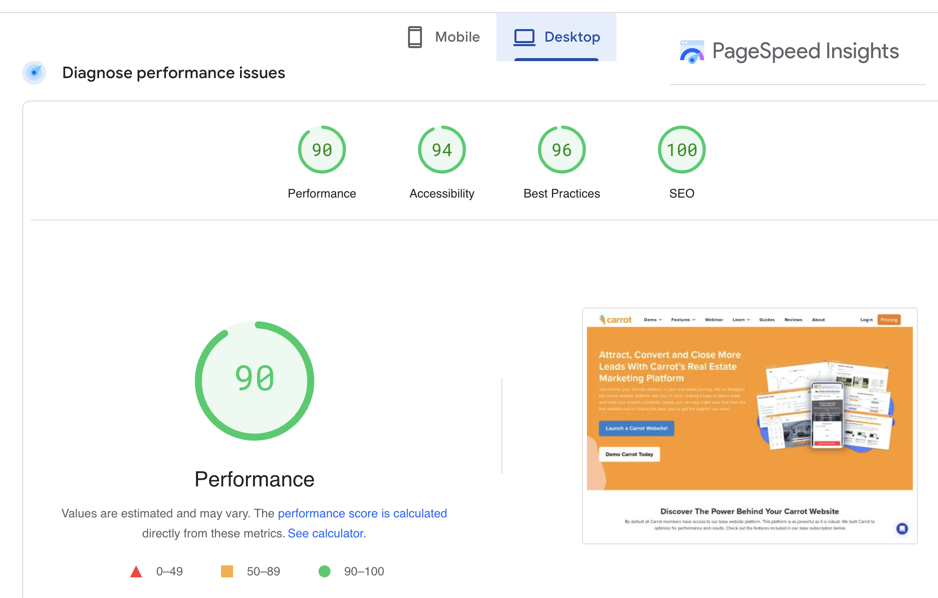
Boost SEO and Accessibility with Video Transcriptions
Adding captions and transcripts to your website videos is a win-win for SEO and user experience:
- Improved Accessibility: Transcripts make your video content accessible to a wider audience, including deaf and hard-of-hearing viewers, those with learning disabilities, and non-native speakers who rely on captions.
- Enhanced SEO Performance: Search engines can’t directly understand video content. Transcripts provide text that search engines can crawl and index, allowing them to understand the video’s subject matter and potentially improve your ranking for relevant keywords.
- Increased User Engagement: Closed captions allow viewers to follow along with the video even in noisy environments or when they can’t turn up the volume. This can improve engagement and watch time.
Additional Considerations:
- Accurate and Timed Captions: Ensure your captions are accurate, synchronized with the video’s audio, and properly formatted.
- Multiple Language Options: Consider offering captions in multiple languages to reach a wider audience and improve accessibility.
- Promote Shareability: Closed captions can be embedded within the video player, making it easier for viewers to share your videos with captions enabled.
By incorporating captions and transcripts, you’ll create a more inclusive and engaging user experience while also providing valuable SEO benefits for your website.
You can see an example on our Whiteboard training videos.

Strategic Video Embeds for Enhanced SEO
Embedding videos within your blog posts can be a powerful SEO strategy. Here’s how to leverage them effectively:
- Prioritize User Experience: While YouTube embeds can increase views, prioritize user experience over pure view count inflation. Ensure the video content directly complements and enriches your blog post.
- Optimize for Mobile: With most web traffic now mobile, ensure your video embeds display and function flawlessly on smartphones and tablets. Responsive design and code optimization are crucial.
- Optimize Video Titles & Descriptions: Craft compelling video titles and descriptions that are relevant to your blog post’s topic and target keywords. Include these elements within the embed code for search engine visibility.
- Focus on Dwell Time & Engagement: Think beyond just video views. A high-quality, informative video that keeps users engaged within your blog post contributes more to dwell time and overall SEO value.
Here’s an example of an embedded video:
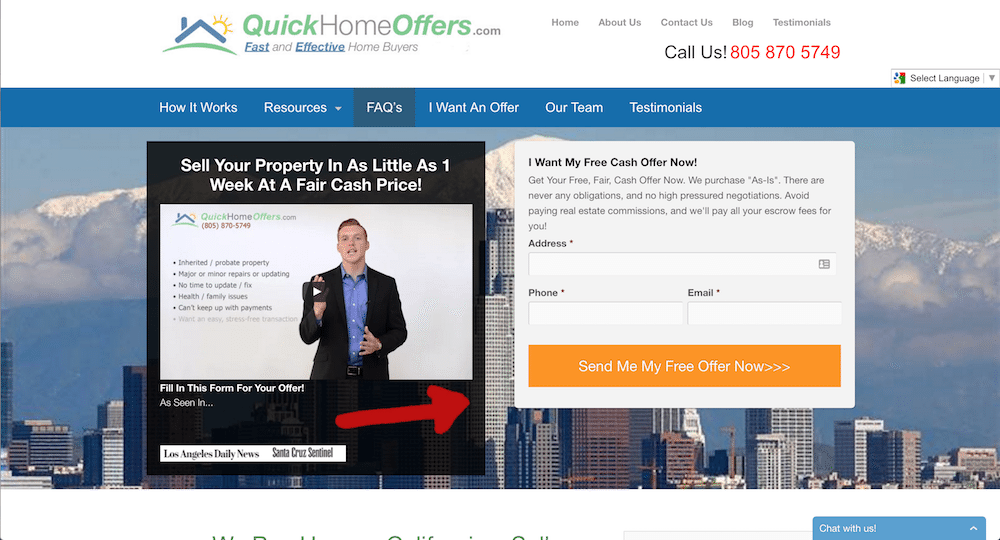
By following these best practices, video embeds can become a valuable tool for attracting organic traffic, improving user engagement, and ultimately boosting your website’s SEO performance.
Optimize Your Video Metadata for Search Visibility

While keyword inclusion remains important, a more nuanced approach is key to effective SEO. Here’s how to optimize your video metadata:
- Target Relevant Keywords: Include your target keyword naturally within your video title, description, and filename. However, prioritize user readability and avoid keyword stuffing. Focus on a primary keyword and relevant variations to capture a wider search range.
- Prioritize Title Clarity: Your title should be clear, concise, and reflect the video content accurately. Users are likelier to click on informative titles, and search engines consider user behavior in ranking.
- Descriptive and Engaging Descriptions: Craft a compelling video description that entices viewers and clearly explains the content. Include your target keyword naturally within the first 2-3 sentences, as search engines prioritize this.
- Utilize Closed Captions & Transcripts: Closed captions and transcripts improve accessibility and provide search engines with valuable text for indexing. This allows your video to be discovered through text-based searches.
- Consider Search Intent: Go beyond just keywords and understand the search intent behind your target terms. Are users looking for information, entertainment, or a specific solution? Tailor your video content and title accordingly.
Remember: Search engines are becoming increasingly sophisticated. Focus on creating high-quality, informative videos that resonate with your target audience. Strategic use of relevant keywords throughout your metadata will further enhance discoverability.
Encourage Engagement, Not Just Likes
While video likes are a factor, YouTube considers that focusing solely on “like this” calls to action isn’t the most effective strategy. Here’s how to encourage user engagement that benefits SEO:
- Craft Compelling CTAs: Instead of generic “like this” prompts, create clear and specific calls to action that encourage viewers to take the next step. This could be subscribing to your channel, leaving a comment, visiting your website, or sharing the video.
- Target Engagement Throughout the Video: Don’t wait until the end. Integrate CTAs naturally throughout your video content, reminding viewers of the desired action.
- Respond to Comments & Questions: Actively engage with your viewers by responding to comments and questions. This fosters a community atmosphere, encourages repeat viewers, and demonstrates the value you place on their interaction.
- Leverage Cards and End Screens: Utilize YouTube cards and end screens to strategically promote other relevant videos, playlists, or links to your website. This keeps viewers engaged with your content and potentially increases watch time.
Focus on Overall Engagement Metrics
While likes are a consideration, YouTube’s algorithm prioritizes videos that keep users engaged for longer periods. This includes factors like watch time, click-through rates on CTAs, and audience retention. By creating high-quality, informative videos that spark conversation and encourage viewers to stay tuned, you’ll naturally see an increase in likes alongside other valuable engagement metrics.
Leverage Keyword-Optimized Playlists for Enhanced SEO

Creating playlists that strategically target relevant keywords can be a powerful tool for boosting your YouTube channel’s SEO. Here’s how:
- Improved Search Visibility: Playlists optimized with relevant keywords can rank in YouTube’s search results, increasing the discoverability of your content for users searching those terms.
- Enhanced User Experience: Playlists provide a structured and engaging way for viewers to explore your content library on a specific topic. This can lead to longer watch times and increased channel engagement.
- Signaling Relevancy to Search Engines: Playlists act as topical collections, helping search engines like Google understand your channel’s overarching themes and content.
Best Practices for Keyword-Rich Playlists:
- Target Relevant Keywords: Conduct keyword research to identify relevant terms your target audience uses to search for videos related to your content. Integrate these keywords naturally into your playlist title and description.
- Prioritize User Intent: Go beyond just keywords and consider the search intent behind your target terms. Are users looking for information, entertainment, or a specific solution? Craft your playlist title and description with user intent in mind.
- Optimize Playlist Structure: Organize your playlists logically, grouping videos that naturally complement each other thematically.
- Maintain Consistency: Ensure playlist titles and descriptions align with the video content within.
- Promote Your Playlists: Share your playlists across your social media channels and website to increase visibility. Consider embedding playlists on relevant website pages to enhance user experience.
By following these best practices, keyword-rich playlists can become valuable for attracting organic traffic, improving user engagement, and boosting your YouTube channel’s SEO performance.
Strategic URL Structuring for Enhanced SEO

While keywords in URLs remain a factor for search engines, a more balanced approach is key to effective SEO. Here’s how to craft effective URLs:
- Prioritize Readability: Maintain a clear and concise URL structure that is easy for users to understand. Avoid excessively long URLs or strings of keywords that sacrifice readability.
- Incorporate Relevant Keywords: Include your target keyword naturally within the URL, ideally towards the beginning. This helps search engines understand the content’s relevance.
- Focus on User Experience: URLs should be informative and user-friendly for search engines. Users should be able to glean the general topic of the page from the URL.
- Embrace Descriptive Titles: Don’t rely solely on keywords. Utilize descriptive titles within the URL that accurately reflect the webpage’s content. This improves user experience and provides context beyond just keywords.
- Maintain URL Structure Consistency: Develop a consistent URL structure for your website that makes navigation and content organization clear for both users and search engines.
- Prioritize HTTPS: Ensure all your URLs use the secure HTTPS protocol. This is a ranking factor for Google and builds user trust.
Remember: Search engines are becoming increasingly sophisticated in understanding website content. Focus on creating high-quality, informative content that resonates with your target audience. Strategic use of relevant keywords throughout your URLs, alongside a user-centric approach, will contribute to your website’s SEO success.
Enhance Readability and SEO with Effective Bullets and Subheadings
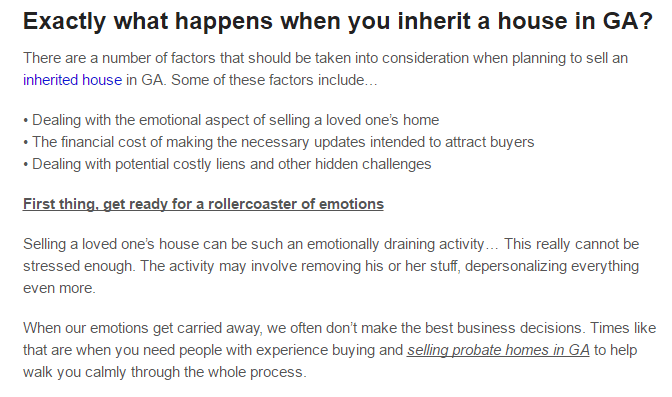
Breaking up large chunks of text with bullets and subheadings is not just about user experience; it also benefits SEO. Here’s how:
- Improved User Experience: Content formatted with clear subheadings and bullet points is easier to scan and digest, leading to longer attention spans and better comprehension. This can improve bounce rate and overall user engagement, which are positive SEO signals.
- Enhanced Content Structure: Subheadings act as mini-headers, creating a clear hierarchy and logical flow to your content. This helps search engines understand the organization of your page and identify the most relevant information.
- Keyword Integration: Subheadings and bullet points provide natural opportunities to incorporate your target keywords and related phrases. This aids search engine relevancy without keyword stuffing.
- Accessibility Benefits: Bullet points and subheadings improve accessibility for users with visual impairments or reading difficulties. This is not only a good practice but can also broaden your potential audience reach.
Best Practices for Using Bullets and Subheadings:
- Strategic Subheading Placement: Use subheadings to break up long sections and introduce key points or transitions.
- Descriptive and Concise Subheadings: Keep subheadings clear, concise, and keyword-relevant. They should accurately reflect the content of the following section.
- Bullet Point Clarity: Ensure each bullet point is well-written, informative, and directly relevant to the subheading or broader topic.
- Maintain Balance: Don’t overdo it. While these elements enhance readability, excessive use can disrupt the flow of your content.
By following these best practices, you can leverage bullets and subheadings to create engaging, SEO-friendly content that keeps users informed and search engines happy.
Crafting Compelling Title Tags: Beyond Parentheses and Brackets

While parentheses and brackets can add visual interest to your title tags, their impact on SEO and click-through rates (CTR) is debatable. Here’s how to create effective title tags that stand out and attract clicks:
- Prioritize Clarity and Accuracy: Your title tag should be clear, concise, and accurately reflect the content of your webpage. This is crucial for both users and search engines.
- Target Relevant Keywords: Integrate your target keywords naturally within the title tag. However, prioritize user readability and avoid keyword stuffing.
- Focus on User Intent: Consider the search intent behind your target keywords. What information are users seeking? Craft your title tag to address their specific needs.
- Create a Sense of Urgency or Curiosity: Consider using strong verbs or intriguing questions to pique user interest and encourage clicks.
- Maintain Optimal Length: Aim for title tags between 50-60 characters to ensure they display fully in search engine results pages (SERPs).
- Test and Refine: Don’t be afraid to experiment with different title tag variations and track their performance using analytics tools.
A Note on Parentheses and Brackets:
While some studies suggest parentheses or brackets can improve CTR, it’s not a guaranteed SEO tactic. In some cases, they might even cut off crucial information due to character limitations in SERPs. Use them strategically and only if they enhance clarity or add a natural element to your title tag.
Remember: The best title tags are informative, engaging, and accurately represent your content. Focus on creating user-centric titles that effectively communicate the value your webpage offers.
Crafting Compelling Description Tags for Enhanced Click-Through Rates

Description tags are crucial for enticing users to click on your search engine result page (SERP) listing. Here’s how to optimize them:
- Prioritize Clarity and User Intent: Craft a clear, concise, and compelling description that accurately reflects your webpage’s content and addresses the user’s search intent.
- Target Relevant Keywords: Include your target keyword naturally within the description tag, ideally towards the beginning. However, prioritize readability and avoid keyword stuffing.
- Focus on User Benefits: Highlight the key benefits users will gain by clicking on your webpage. What problem do you solve? What information do you provide?
- Maintain Optimal Length: Aim for description tags between 150-160 characters to ensure they display fully in most SERPs.
- Strong Call to Action (CTA) (Optional): Consider incorporating a clear and concise call to action (CTA) that encourages users to click (e.g., “Learn More,” “Download Now”).
A Note on Bolded Keywords:
While Google may bold keywords within your description tag that match the user’s search query, this isn’t a guaranteed tactic to boost CTR. Focus on creating a user-centric description that provides value and compels clicks.
Best Practices:
- Write Unique Descriptions: Create unique description tags for each webpage that accurately reflect the content.
- Test and Refine: Use analytics tools to track the performance of your description tags and refine them over time based on user behavior.
By following these practices, you can craft compelling description tags that effectively entice users to click through to your webpage and improve your website’s overall SEO performance.
Strategic Use of Keywords in H1 and H2 Tags for Enhanced SEO
While including your target keyword in H1 and H2 tags remains important, a more nuanced approach is essential for effective SEO. Here’s how to optimize your headings:
- Prioritize User Readability: H1 and H2 tags should be clear, concise, and grammatically correct. They should naturally flow within your content, not feel forced for keyword placement.
- Target Relevant Keywords and Variations: Incorporate your target keyword and relevant variations naturally within your H1 and H2 tags. However, avoid keyword stuffing or sacrificing readability.
- Focus on H1 as the Main Topic: The H1 tag should be the primary headline of your webpage, accurately reflecting the overarching content theme.
- H2s for Subheadings and Sections: Use H2 tags for subheadings and sections within your content. They should provide a clear hierarchy and guide users through the structure of your webpage.
- Long-Tail Keywords Considered: Consider incorporating long-tail keywords (more specific keyword phrases) within your H2 tags to target user intent and improve topical relevance.
A Note on Keyword Synonym Focus:
While synonyms can be a helpful strategy, don’t prioritize them over natural language flow. Focus on using relevant keywords and variations that fit seamlessly within your headings. Search engines are becoming increasingly sophisticated and understand synonyms in context.
Additional Tips:
- Maintain H1 Tag Uniqueness: Ensure your H1 tag is unique and does not duplicate content from other headings or meta descriptions.
- H2 Tag Hierarchy: Structure your H2 tags logically, creating a clear hierarchy of subheadings within your webpage.
By following these best practices, you can leverage H1 and H2 tags strategically to enhance user experience, improve content organization, and signal relevance to search engines, ultimately boosting your website’s SEO performance.
Strategic Social Sharing for Enhanced Content Visibility

While social sharing buttons remain a valuable tool, their impact on SEO is considered an indirect factor. Here’s how to leverage social sharing for optimal results:
- Prioritize User Experience: Social sharing buttons should be easily visible and accessible on both desktop and mobile versions of your website. However, avoid intrusive placements that disrupt user experience. Consider sleek, integrated buttons or fly-out menus.
- Focus on Diverse Sharing Options: Offer a variety of social sharing buttons beyond just the major platforms (Facebook, Twitter). Include options relevant to your target audience and content type (e.g., Pinterest for visual content, LinkedIn for professional articles).
- Encourage Strategic Sharing: Craft compelling calls to action (CTAs) that entice users to share your content. Highlight the value users will gain by sharing (e.g., “Spread the word!” or “Share this helpful tip with your friends”).
- Track and Analyze Engagement: Monitor which social platforms users share your content on most. This helps you tailor your content strategy and social media outreach to resonate better with your audience.
SEO and Social Sharing:
While social shares may not directly impact SEO ranking, they contribute to overall brand awareness and online visibility. Increased social engagement can lead to more website traffic and potentially backlinks, which are a confirmed SEO ranking factor.
Focus on High-Quality Content:
Ultimately, the best way to encourage social sharing and enhance SEO is by creating high-quality, informative, and engaging content that users find valuable enough to share with their networks.
By following these updated best practices, you can leverage social sharing to increase user engagement, build brand awareness, and contribute to your website’s overall SEO success.
Optimizing Your Homepage for SEO, Branding, and Conversions
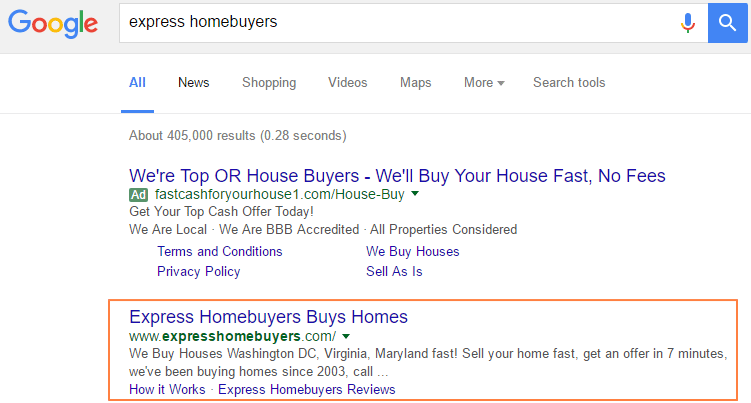
Your homepage is a prime piece of SEO real estate, offering valuable opportunities for brand building, user engagement, and conversions. That’s why Carrot homepages are optimized with content. Here’s how to strike a balance:
- Prioritize User Experience: Craft a user-friendly homepage that is visually appealing, easy to navigate, and provides a clear understanding of your brand and value proposition. This keeps users engaged and encourages exploration of your website.
- Balance Content and Design: While content plays a role, don’t overload your homepage with text. Maintain a visually balanced layout with high-quality images, videos, and concise yet informative content blocks.
- Target Relevant Keywords: Integrate relevant keywords strategically throughout your homepage content, including your H1 tag, meta description, and key sections. However, prioritize user readability and avoid keyword stuffing.
- Focus on Brand Clarity: Clearly communicate your brand identity, mission, and unique selling proposition (USP) on your homepage. This fosters brand recognition and trust with users.
- Optimize for Conversions: Include clear calls to action (CTAs) that guide users towards desired actions, such as contacting you, subscribing to your newsletter, or exploring specific product or service pages.
- Internal Linking Strategy: Implement a strategic internal linking structure that connects your homepage to relevant internal pages, improving website navigation and user flow. This also distributes SEO value throughout your website.
- Mobile-First Optimization: Ensure your homepage displays and functions flawlessly on mobile devices, as a significant portion of web traffic now comes from smartphones and tablets.
Homepage Ranking and Overall SEO:
While ranking your homepage for specific keywords can be valuable, it’s not the sole focus. A well-optimized homepage acts as a gateway to your entire website. By prioritizing user experience, brand clarity, and conversion optimization, you’ll create a strong foundation for overall SEO success.
Remember: Search engines are becoming increasingly sophisticated at understanding websites holistically. A balanced homepage that caters to user needs, incorporates SEO best practices, and reflects your brand effectively will contribute significantly to your website’s ranking and overall online presence.
Focus on In-Depth Content that Addresses User Intent
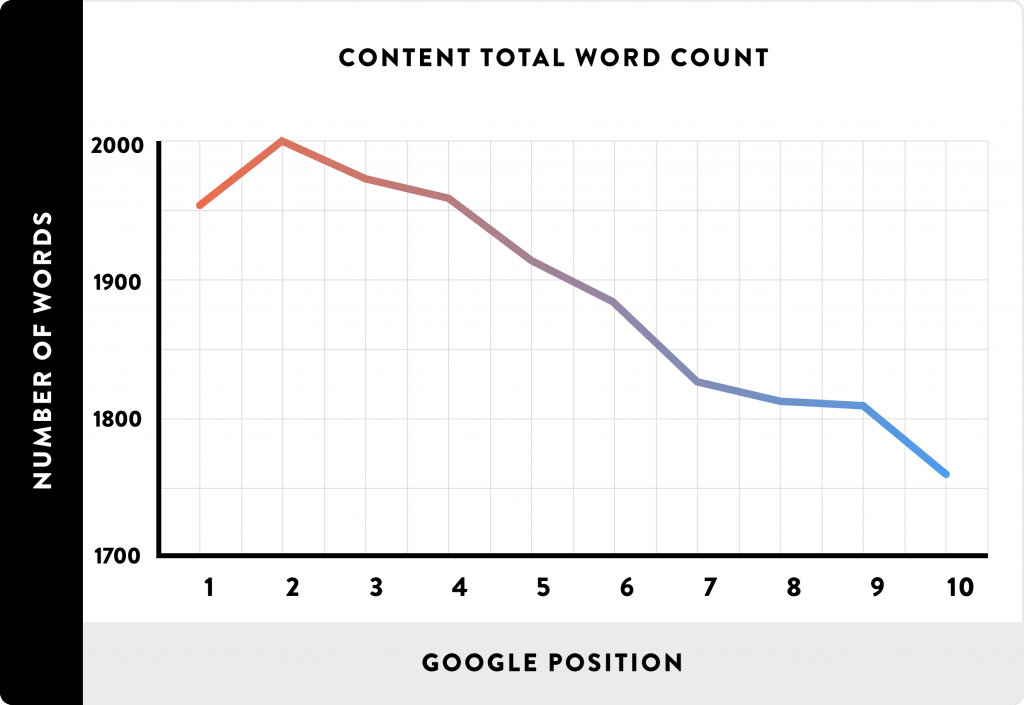
While long content can be beneficial for SEO, it’s not a guaranteed path to ranking success. Here’s a more nuanced approach to content length for SEO:
- Prioritize User Intent: Content depth should be determined by the specific topic and user intent behind relevant keywords. Some topics require in-depth explanations, naturally leading to longer content. Others might be better served by concise, informative pieces.
- Informative and Valuable Content is Key: Focus on creating high-quality, informative content that comprehensively addresses user needs and search queries. Content length becomes a secondary factor when users find the information genuinely valuable and engaging.
- Depth over Length: Strive for content depth over simply meeting an arbitrary word count. Comprehensively explore the topic, providing valuable insights and addressing potential user questions.
- Consider User Engagement: Break up lengthy content with subheadings, visuals, and multimedia elements to maintain user engagement and readability.
SEO Benefits of In-Depth Content:
- Improved Topic Coverage: In-depth content allows for a more thorough exploration of a topic, potentially ranking for a wider range of relevant keywords.
- Enhanced User Expertise: Demonstrates your website’s expertise and authority on a subject, which can be a positive SEO signal.
- Increased Dwell Time: Users tend to spend more time on long-form content, which is a positive SEO ranking factor.
Remember: Search engines are becoming increasingly sophisticated at understanding content quality and value. Focus on creating informative, well-researched content that resonates with your target audience and addresses their search intent. Content length will naturally follow as you comprehensively cover the topic.
.
4 Real Estate Content Marketing Strategies You Can Actually Use to Grow Your Business
Leveraging Internal Linking for Enhanced SEO and User Experience
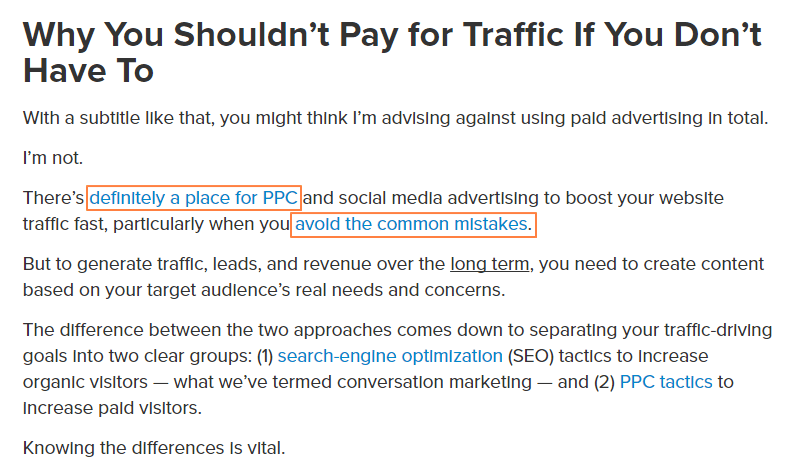
Internal linking is a valuable SEO strategy that involves strategically linking relevant pages within your website. Here’s how to maximize its effectiveness:
- Contextual Linking: Link relevant pages to each other contextually within your content. Use descriptive anchor text that accurately reflects the linked page’s content. This helps search engines understand the relationship between pages and improves user navigation.
- Create a Logical Hierarchy: Develop a logical hierarchy of interconnected pages on your website. Link from high-authority pages (e.g., your homepage or well-ranking content) to relevant supporting pages. This distributes SEO value throughout your website.
- Target Relevant Keywords: Consider the keywords your target pages are optimized for when creating internal links. Anchor text can be optimized with relevant keywords, but avoid keyword stuffing.
- Avoid Excessive Linking: Don’t go overboard with internal linking. An excessive number of links on a single page can dilute their SEO value and hinder user experience.
- Prioritize User Experience: Internal linking should ultimately enhance user experience by guiding them to relevant and informative content on your website.
Benefits of Strategic Internal Linking:
- Improved SEO Performance: Strategic internal linking helps search engines understand your website’s structure and content relationships. This can improve the ranking potential of your interconnected pages.
- Enhanced User Engagement: Well-placed internal links keep users engaged on your website by guiding them to discover relevant and valuable content. This can increase dwell time and overall user satisfaction.
- Distributes Link Equity: Internal links distribute link equity (SEO value) from high-authority pages to other relevant pages on your website.
By following these best practices, you can leverage internal linking to improve your website’s SEO performance, user experience, and overall online presence.
Craft In-Depth Content that Gratifies User Search Intent
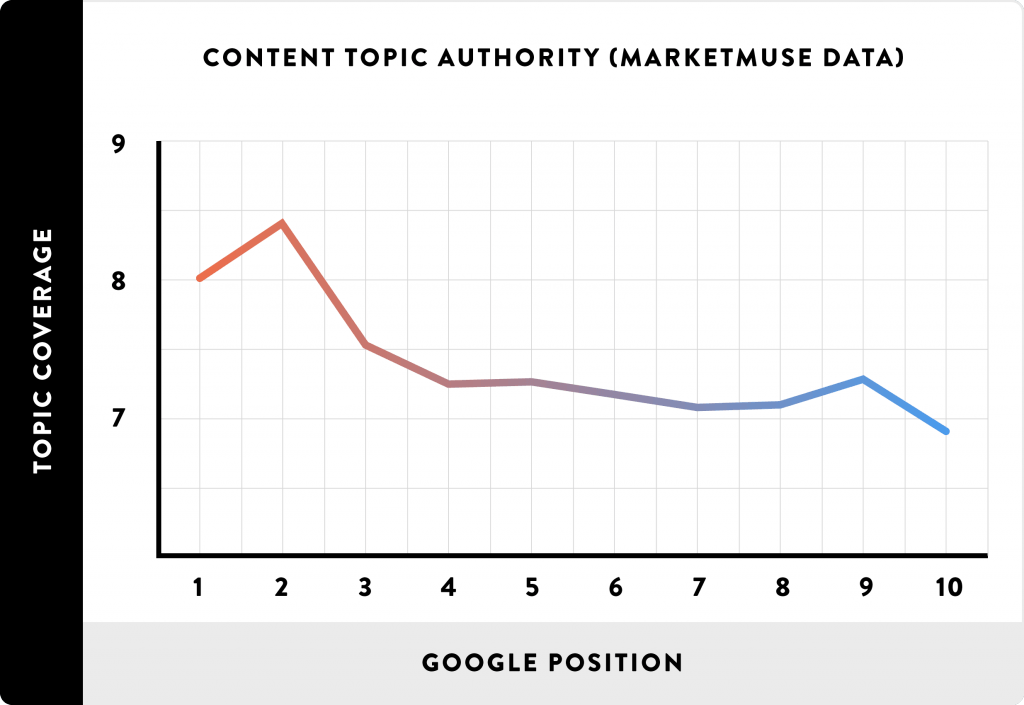
Creating content that comprehensively explores a topic is a powerful SEO strategy. Here’s why in-depth content matters:
- Enhanced User Satisfaction: In-depth content provides users with a thorough understanding of the topic, addressing their search intent and potential questions. This leads to a more satisfying user experience and increased dwell time (time spent on your webpage).
- Improved Topic Authority: By comprehensively covering a topic, you demonstrate your website’s expertise and authority on the subject. This can be a positive SEO signal for search engines.
- Potential for Ranking for More Keywords: In-depth content naturally incorporates a wider range of relevant keywords and related phrases. This can improve your website’s ranking potential for various user search queries.
- Increased Shareability: Informative and comprehensive content is more likely to be shared by users, generating valuable backlinks which are a confirmed SEO ranking factor.
Beyond Word Count:
While content length is a factor, prioritize depth over simply meeting an arbitrary word count. Focus on delivering valuable insights, addressing potential user questions, and comprehensively exploring the topic at hand.
Additional SEO Benefits:
- Improved Topic Coverage: In-depth content allows you to explore subtopics and nuances within a broader theme, potentially attracting a wider audience.
- Enhanced Credibility: Demonstrates your commitment to providing valuable information, fostering trust and credibility with your audience.
- Stronger Foundation for Topical Clusters: In-depth content can serve as a pillar page within a topical cluster, linking to and from more specific, focused content pieces. This strengthens your website’s topical authority in a particular area.
By creating high-quality, in-depth content that resonates with your target audience, you can achieve significant SEO benefits, improve user engagement, and establish your website as a trusted source of information.
Descriptive Alt Text: The Key to Accessible and SEO-Friendly Images

Image alt text plays a crucial role in both accessibility and SEO for your website. Here’s how to craft effective alt text:
- Prioritize Clarity and Accuracy: Describe the image accurately and concisely in a natural, user-friendly way. Imagine explaining the image to someone who can’t see it.
- Target Relevant Keywords: While keyword inclusion is valuable, prioritize natural integration over keyword stuffing. Don’t force keywords if they disrupt the flow of your alt text.
- Focus on User Context: Consider the context in which the image appears on your webpage. What information does it add to the surrounding content? Describe the image in a way that complements the webpage’s overall message.
- Be Specific: Go beyond generic descriptions like “image” or “photo.” Provide details about the image’s content, such as objects, people, or actions depicted.
Benefits of Effective Alt Text:
- Improved Accessibility: Alt text allows screen readers to convey image content to users with visual impairments, enhancing website accessibility.
- Enhanced SEO: Search engines use alt text to understand the context and content of your images. This can improve your website’s ranking potential for relevant image search queries.
- Stronger User Experience: Clear alt text provides context for users who encounter slow loading images or have images disabled in their browser settings.
Additional Tips:
- Limit Length: Keep alt text concise, ideally under 120 characters.
- Uniqueness Matters: Create unique alt text for each image, avoiding repetitive descriptions.
- Start with the Main Subject: Focus on the most important element within the image in your alt text description.
By following these best practices, you can create informative and SEO-friendly alt text that improves accessibility, user experience, and your website’s overall SEO performance.
Enhance User Experience and SEO with a Comprehensive Glossary
Developing a glossary of terms can be a valuable strategy for websites with audience segments that might lack familiarity with industry-specific language. Here’s how to create a user-friendly and SEO-beneficial glossary:
- Prioritize User Needs: Identify the key terms and concepts your target audience might encounter while browsing your website. Focus on terminology specific to your investment strategy.
- Go Beyond Simple Definitions: Provide clear, concise, and informative definitions for each term. However, aim to go a step further. Offer examples, context, and potential applications to enhance user understanding.
- Structure for Easy Navigation: Organize your glossary alphabetically or thematically for a user-friendly browsing experience. Consider implementing a search function within the glossary itself.
- Link Strategically: Link relevant glossary terms within your website content whenever those terms are used. This improves user experience by providing instant access to definitions and fosters internal linking, which can benefit SEO.
- Optimize for Search (Optional): While a glossary isn’t a core SEO tactic, you can optimize it by strategically incorporating relevant keywords within definitions, but prioritize user clarity over keyword stuffing.
Additional SEO Considerations:
- Targeted Content: Consider creating separate glossaries for different audience segments with varying levels of investment knowledge. This allows you to tailor definitions and terminology to their specific needs.
- Mobile-Friendly Design: Ensure your glossary displays and functions flawlessly on mobile devices, as a significant portion of web traffic now comes from smartphones and tablets.
By creating a well-structured, informative, and user-friendly glossary, you can enhance user experience, improve website navigation, and potentially see some indirect SEO benefits through strategic linking and content targeting. This can lead to increased user engagement and establish your website as a trusted source of information within your investment niche.
Refined Approach to Keyword Research: Beyond Book Table of Contents

While analyzing popular book tables of contents can spark some topic ideas, it’s not the most robust SEO strategy. Here’s a more comprehensive approach to keyword research:
- Prioritize Keyword Research Tools: Utilize keyword research tools like Google Keyword Planner, SEMrush, or Ahrefs to identify relevant keywords with search volume and ranking difficulty.
- Target User Search Intent: Go beyond just keywords. Understand the user’s intent behind their search queries. What information are they seeking? What problems are they trying to solve?
- Consider Long-Tail Keywords: Focus on long-tail keywords (more specific keyword phrases) that better reflect user intent and have a higher chance of converting visitors.
- Analyze Competitor Content: Research your competitor’s content to see what keywords they rank for and identify potential content gaps you can address.
- Look Beyond Books: Explore industry publications, blogs, and online communities to discover trending topics and relevant keywords within your niche.
Utilizing Book Content (Strategically):
- Supplement Research: While book tables of contents can offer some topic inspiration, use them as a starting point, not the sole source for keyword research.
- Focus on Established Authors: If using books, prioritize works from established authors in your field. Their content is more likely to reflect current industry trends and terminology.
Remember: Effective SEO goes beyond keywords. Focus on creating high-quality, informative content that addresses user search intent and provides value to your target audience.
By following these practices, you can conduct thorough keyword research, identify high-potential topics, and craft content that resonates with your audience and search engines alike.
Creating Effective Sitemaps for Improved SEO and User Experience
Sitemaps can play a valuable role in helping search engines discover and index your website’s content. Here’s an updated approach:
- Focus on XML Sitemaps: Prioritize creating and submitting an XML sitemap to Google Search Console. This format provides a structured list of your website’s URLs, making it easier for search engines to crawl and index your content.
- Consider HTML Sitemaps (Optional): While not essential for SEO, HTML sitemaps can provide an additional user-friendly way for visitors to navigate your website’s content structure. However, prioritize your XML sitemap for search engine optimization.
- Maintain Sitemap Accuracy: Ensure your sitemap is up-to-date and reflects any changes to your website’s content or structure. Regularly update your sitemap to include new pages and remove broken links.
- Sitemap Size Considerations: There are limitations on the size and number of URLs an XML sitemap can contain. If your website is large, consider creating multiple sitemaps or using a sitemap index file.
Submitting Your Sitemap to Google Search Console:
- Once you’ve created your XML sitemap, submit it to Google Search Console through the “Sitemaps” section. This helps Google discover your sitemap and improve crawling efficiency.
Additional Considerations:
- Mobile-Friendly Sitemap: If you have a separate mobile version of your website, consider creating a dedicated mobile sitemap.
- Large Websites: For very large websites, explore advanced sitemap creation tools that can handle complex structures and automate updates.
By following these best practices, you can create and maintain effective sitemaps that improve search engine crawlability, enhance SEO performance, and potentially offer a user-friendly navigation aid for visitors. However, remember that sitemaps are one factor among many in SEO, and high-quality content remains crucial for website success.
If you are a Carrot member, the sitemap has already been created for you. We have a tutorial on it here.

Leverage Carrot’s Proven Inbound Marketing Platform
Quick & effective real estate websites to help you generate leads online.

